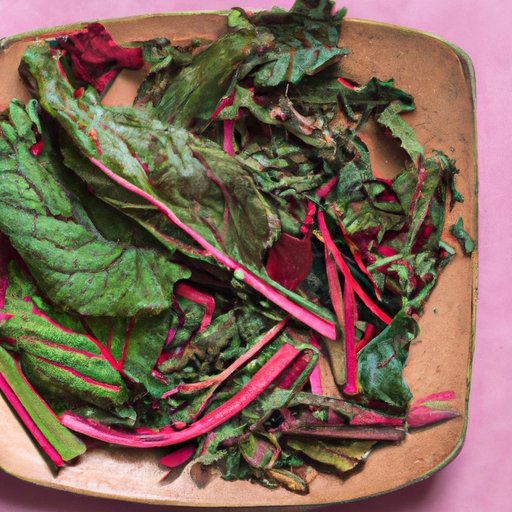
Introduction
Beet greens are often discarded, but did you know they’re actually quite nutritious and versatile? In this article, we’ll explore the benefits of eating beet leaves, provide tips on how to prepare them, and offer creative recipe ideas for utilizing every part of your beets. Read on to discover the many surprising uses of beet greens!
The Surprising Truth About Beet Leaves: Can You Really Eat Them?
While many people don’t realize it, beet leaves are actually edible and quite delicious! They’re packed with nutrients such as fiber, vitamin C, and iron, making them a healthy addition to any diet. Plus, they’re low in calories, making them a great replacement for more calorie-dense ingredients in your meals.
From Compost to Cuisine: The Unexpected Uses of Beet Greens
Beet greens can be used in many creative ways beyond simply being a side dish. They’re great in smoothies, salads, and even pesto! Try incorporating them into your favorite recipes for a nutritious boost. Here are some easy recipe ideas:
- Beet Green Smoothie: Blend beet greens with bananas, berries, and almond milk for a delicious and nutritious smoothie.
- Beet Green Pesto: Blend up beet greens with garlic, olive oil, parmesan cheese, and pine nuts for a unique twist on traditional pesto.
- Beet Green Omelet: Add sautéed beet greens to your morning omelet for a nutrient-packed breakfast.
Beyond the Beetroot: A Guide to Using Every Part of Your Beets
Don’t stop at the greens! The entire beet is edible, including the root and stems. Beetroot can be roasted, boiled, or even pickled, while the stems can be added to stir-fries and soups. Don’t let any part of your beets go to waste!
The Health Benefits of Eating Beet Leaves – and How to Prepare Them
Not only are beet greens delicious, but they’re also incredibly nutritious. They’re high in vitamins A, C, and K, as well as minerals like iron, calcium, and potassium. They also contain anti-inflammatory properties that can help reduce the risk of chronic diseases like heart disease and cancer. To prepare them, simply rinse the leaves and stems, chop them up, and sauté them with some garlic and olive oil.
Sustainable Eating: Why You Should Stop Throwing Away Your Beet Greens
Reducing food waste is essential for a sustainable diet, and beet greens are just one example of a food that’s often overlooked. By using all parts of your beets, you’re not only reducing food waste, but you’re also saving money and enjoying delicious and nutritious meals!
Vegetable Hacks: How to Make Delicious Meals From Beet Leaves
Beet greens can be used in a variety of dishes, from breakfast to dinner. Here are some additional recipe ideas:
- Beet Green Salad: Toss chopped beet greens with cherry tomatoes, feta cheese, and a balsamic vinaigrette for a simple and tasty salad.
- Beet Green Stir-Fry: Sauté chopped beet greens, bell peppers, and mushrooms for a quick and easy stir-fry.
- Beet Green Chips: Brush beet greens with olive oil, sprinkle with salt, and bake at 350°F for 8-10 minutes for a healthy and delicious snack.
Beet Greens 101: The Ultimate Guide to Cooking and Eating Beet Leaves
By now, you should be an expert on all things beet greens! Remember, they’re a versatile and nutritious ingredient that can be used in many different ways. If you’re still looking for inspiration, check out these additional resources:
Conclusion
Don’t let your beet greens go to waste! With all the health benefits they offer, they’re an ingredient that shouldn’t be overlooked. By incorporating beet greens into your diet, you’ll be reducing food waste, saving money, and enjoying delicious and nutritious meals.




